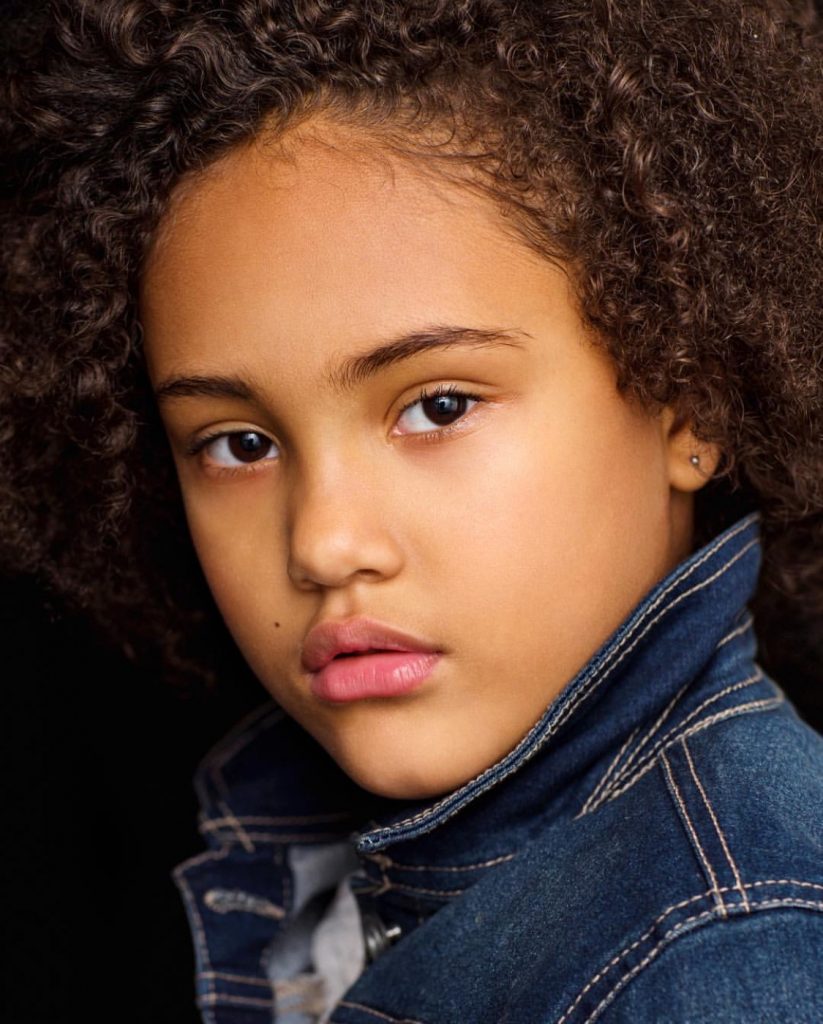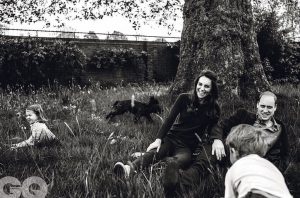
Of course your child’s cute — but could he or she be a model? Here’s a behind-the-scenes peek at what it really takes to be picture-perfect
Strategies
Flip through any magazine, channel-surf on any given night, even drive by any stretch of highway billboards, and there they are: adorable, wide-eyed babies showing off the latest in kiddie couture or helping hawk everything from juice to Jeeps. If you’re like most parents, the sight of these pint-size models inspires three responses: first, “Awwww!”; then, “My kid’s cuter!”; and, finally, “How can I get my child a job like that?”
For an inside look into the world of baby models, Parents spent a day with 17-month-old Katie Lahey as her mom took her to visit a casting agency and pose at a photo shoot. We also asked industry insiders what it takes to win a spot in front of the cameras. What we learned about the business is informative — and sometimes surprising. Katie’s job isn’t all fun and glamour but actually a lot of hard work. If you think your child’s a definite head turner, too, here are the supermodel strategies you must follow.
* Get the picture. Your first contact with a modeling agency should be by mail. “Send two or three color snapshots of your child, including head-only and full-body photos, with a self-addressed, stamped envelope and a short letter stating your interest,” suggests Charles Ramsey, owner of Product Model Management, in New York City. They don’t have to be professional shots; just take them yourself. But play it straight — no funny hats or pictures of Junior with chocolate cake all over his face. Write your child’s name (and yours), his age, clothing size, hair and eye color, and address on the back of each photo.Modeling agents aren’t after a specific look, nor do they necessarily want the most gorgeous kids, Ramsey insists. “Many advertisers actually prefer an average-looking, kid-next-door child,” he says. Children who wear certain popular clothing sizes — 3, 5, and 10 — also get more work. The top criterion, though: Models must live near the agency’s headquarters, which is likely to be in New York City, Los Angeles, or Miami, though some leading firms have offices in such cities as Cleveland or Phoenix. “You need to be able to travel to shoots and meetings on very little notice — sometimes a few hours,” explains Margaret Pelino, a booking agent at Ford Modeling Agency, in Manhattan. “Only people who are local can do that.” If you don’t live in a major metropolitan area, modeling opportunities are limited, though local agencies may be able to book your child small jobs for nearby department stores and companies.A good agency will try to get back to you within several weeks, sending either a polite rejection letter or an invitation for you and your child to make an appointment. If the agents like what they see — namely, a committed parent and a good-humored, charismatic child who seems capable of handling the demands of photo shoots — you may be invited to sign an exclusive contract. But before you do . . .
* Steer clear of scams. Sometimes it’s hard to spot a shady business, but experts agree on one dead giveaway: “Be leery if an agency or individual asks for money up front,” Pelino warns. Most reputable agencies don’t start collecting fees until your child has already worked (in which case, they usually take a cut of about 20 percent from you for setting up each modeling job and the same sum from the company that hires your child).Another trick to beware: Sometimes fly-by-nighters won’t ask for money outright; they’ll say they need you to spend many hundreds or even thousands of dollars on videos or fancy photos of your child, which they claim they’ll then send out to potential clients. “But why would you spend a fortune taking pictures of, say, a 3-year-old? He’s not going to look the way he does for very long,” Pelino points out. Good agencies usually want no more than regularly updated home snapshots or, at most, a set of professionally shot composite cards, which feature a collection of several small photos of your child. (Those will run about $200.)To be safe, check out the agency with your local Better Business Bureau. And follow your instincts, which may prove to be the best guide of all.
* Put on your walking shoes. Once you sign on with a reputable agency, the real work begins: You and your child will be sent on a number of go-sees, brief meetings with representatives of firms who may be interested in hiring your child and want to look her over. “You’re usually in and out of the appointment within 15 minutes, but if there’s a line, a go-see can last much longer,” Ramsey says. Also factor in the time it takes you to travel to and from the site. (You can deduct the travel expenses on your tax return.) But go you must: “Your child is going to work only if you’re committed,” he says. You may have as many as two go-sees a day, then none for weeks. And your child could get hired right away, or it may take ten or more tries to catch a would-be client’s eye.
* Be realistic. Though you may have visions of mega-millions rolling in from your child’s modeling, this is rarely ever the case, says Sheeri Braunstein, a booking agent for the Wilhelmina Modeling Agency, in New York City, which represents both kids and adults. Some child models might get only two or three jobs a month, and young kids usually work no more than two hours at a time.”The standard rate children get for catalog work is $75 an hour,” Braunstein says. Posing for productpackages — a soap-box label, for example — may pay a bit more, perhaps $125 per hour, but editorial work for magazines may be even less lucrative, ranging from $25 to $75 an hour. (Parents pays child models $50 hourly.) “Sometimes the most prestigious places pay the least because you get such a good tear sheet for your child’s portfolio out of it,” Pelino explains.A parent can then show this clipping to potential clients, and that can lead to more-profitable work. TV gigs can yield bigger payoffs, though you’d have to go through a talent agency or an agency division that specializes in television. The process is much the same: the snapshots to mail, the contract to snag, the go-sees to attend, all for the chance to be in a commercial (or, more rarely, a TV show). “Commercial work can yield as little as about $475 — if the spot is filmed but never airs — all the way up to $100,000 for a national commercial that runs for several years,” says Marilyn Zitner, a talent manager at Wilhelmina Agency’s Creative Management division. Many commercials starring children under 4 are filmed several times with several babies: Only the child whose segment is selected ends up making the big bucks. (If your child is listed as a dependent, you’ll need to report her earned income to the IRS if it’s more than $4,300 per year; ask an accountant for advice.)
* Don’t take rejection to heart. If you do decide to help your child pursue a modeling career, prepare yourself for this certainty: At some point, someone’s going to reject her. It may happen right away, with your snapshots being returned in the mail, or later at an agency interview or go-see. Don’t let it bother you.Remember, modeling agencies and their clients don’t always look for the most beautiful or perfect-looking child to sell a product or represent a story. They may want anything from a tiny brunet with a spray of freckles across her nose to a gap-toothed boy with curly red hair. Your child may simply be the wrong shirt size, or she may even be too cute. At least there’s someone who always thinks she’s picture-perfect — you!
A Day in the Life…
8:00 am
It’s a bright morning as Katie Lahey awakens in her parents’ New York City apartment. Mom Cathi gives the toddler a bath, feeds her breakfast, then dresses the sandy-haired girl for the day, which will include visits to a casting agency and her modeling company as well as a photo shoot. For now, though, it’s Cathi who’s doing all the work — packing a bagful of her daughter’s toys, snacks, and a change of clothes.
Does Katie know what’s going on? “She does get excited,” Cathi says. “She’s a happy-go-lucky kid. I would never do this if she didn’t have the temperament.” Or, as we will soon see, if Cathi herself didn’t have the stamina and patience.
10:00am
After a bus ride across town, Cathi and Katie arrive at Utopia, where they meet with several booking agents. The agency represents top children’s photographers, who shoot advertisements and catalogs for such clients as GuessKids and FAO Schwarz. The session is brief: “They just wanted to see Katie’s disposition,” Cathi explains.
Booking agents use this time to make sure the child is comfortable with strangers, attentive, and able to be engaged by a photographer. One of the agents asks Cathi what other modeling jobs her daughter has done, and Cathi runs through some highlights of Katie’s 60-odd gigs to date, including a print ad for Baby Gap’s holiday line and several fashion shoots for Parents. The agents take some Polaroids of Katie, who shines. “She knows the camera. She’ll be a ham and smile and pose,” says her mom. (The toddler’s stellar performance notwithstanding, when Parents checks in with Cathi six weeks later, she tells us that Utopia never called to book Katie for a modeling job.)
12:00 pm
Cathi and her toddler take another bus downtown to the headquarters of Product Model Management, the agency that represents Katie. It’s a small office with a staff of three: “very family-like,” Cathi says. “We always get personal attention here.” She has swung by to pick up vouchers, invoice forms that must be presented at Katie’s modeling job later that afternoon. (Clients use these forms to process payments to the model and agency.) The tot will be posing in a car seat for a Toys “R” Us catalog. Cathi chats with Charles Ramsey, the agency’s owner. “They haven’t seen Katie since she started modeling, 11 months ago,” says the proud mom, though she sends the agency updated snapshots every six months. Ramsey suggests getting professional shots of Katie to send out to clients. Soon the ladies are on their way again.
1:30 PM
Cathi and Katie arrive at the studio where the Toys “R” Us shoot is going to take place. Luckily, no audition was necessary to land this job — Katie has worked for Toys “R” Us before, and the company simply called Product to book her again. They wait for Katie’s turn at hair and makeup. Then a stylist dresses Katie in a new outfit and dabs some powder on the little girl’s face to conceal a few minor blemishes.
So far, Katie has displayed supermodel poise, but an attempt to put away her Winnie-the-Pooh doll and place a barrette in her wispy hair provokes an uncharacteristic torrent of tears. Her mom immediately steps in and persuades the stylist to give up on the hair-clip idea. “If Katie ever gets upset about something on a shoot, I don’t let them do it,” Cathi insists.
On the set, the little girl snuggles into a car seat as the bulbs flash around her. The photographer enlists the help of a baby wrangler, a high-energy professional whose sole job is to draw the tiny model’s attention to the camera lens. She hovers next to the camera waving Elmo dolls and puppets and playing peekaboo with Katie. The effort to elicit happy, photogenic grins is successful. After about 35 minutes, it’s a wrap. Unlike jobs involving grown-ups, which can grind on for many grueling hours, baby photo shoots are about as short as their subjects’ attention span.
3:30 PM
The day’s work is over. Katie’s fee for two hours of modeling (about half an hour of shooting and 90 minutes of prepping and waiting) is $150, of which Product gets 20 percent. (Toys “R” Us will be paying another 20 percent to the agency directly.) Mom’s fee for hours of shuttling? Not a cent.
“It gets us out of the house,” says Cathi, a former PR professional and special-events planner. What’s more, Katie, who’s had a busy career, has so far earned several thousand dollars toward her college fund. “I never push Katie,” Cathi says. “For her, it’s live entertainment — all the photographers, baby wranglers, and other children there amusing her. I think she’ll love looking at her scrapbook someday.” Is there an end in sight to Katie’s modeling days? Perhaps it will arrive when her new siblings do: Cathi and her husband are expecting twins. Toting one baby around town is hard enough. What will this energetic mom do once there are three? “Uh,” says Cathi, looking down at her growing belly, “I may have to reconsider.”
By July 2000 issue of parents magazine






